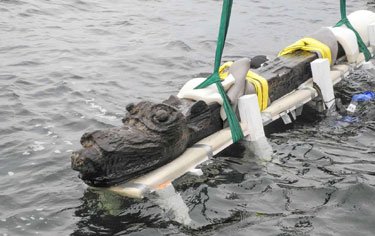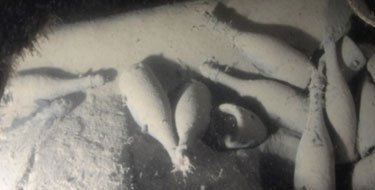Inside the sunken schooner, they found 168 bottles of champagne and an undisclosed amount of bottles of beer. The ship itself likely dates back to the second quarter of the 19th century, making its cargo almost certainly the oldest alcoholic drinks in existence. By comparison, the oldest wines in private hands are only thought to date back to the very end of the 1800s.
This entire story is a good reminder of a basic scientific truth – when in doubt, start drinking the 200-year-old booze. The divers first discovered the champagne was drinkable when changing pressures caused the cork to pop off one of the bottles, and a diver decided to take a swig. He expected to taste seawater that had seeped into the bottle over the last 200 years – which raises very legitimate questions about just why he decided to take a sip in the first place – but was shocked to discover the wine still tasted fine.
The divers all had some of the ancient wine, and then resealed the wine and brought it to wine expert, or sommelier, Ella Grussner Cromwell-Morgan. Here’s how she described it:
“Despite the fact that it was so amazingly old, there was a freshness to the wine. It wasn’t debilitated in any way. Rather, it had a clear acidity which reinforced the sweetness. Finally, a very clear taste of having been stored in oak casks.”
Other descriptions that came out of a recent official tasting range from “lime blossoms, coffee, chanterelles” to ” yeast, honey and…a hint of manure.” Whatever the exact taste, the champagne was definitely significantly sweeter than what we’re familiar with today. While a modern bottle has about 9 grams of sugar, a typical bottle in the 1830s had 100 grams of sugar, and Russians were known to add an extra spoonful of sugar just to make sure it was sweet enough.
So how did the alcohol survive for so long under the sea? That’s actually the absolute best place to keep them, as champagne expert Richard Juhlin explains:
“Bottles kept at the bottom of the sea are better kept than in the finest wine cellars.”
We can only hope this starts off a craze of storing wine inside shipwrecks. If you really care about your wine, I don’t see any alternative. And it really was incredibly well-preserved – other than a loss of fizziness from the slow loss of air bubbles over the nearly 200 years, the wine tasted exactly the same as it would have back in the 1800s.
And what about the beer? The divers, for their part, say they’re more interested in the beer than the champagne, as wreck discover Christian Ekstroem comments:
“I don’t care so much about the champagne. Champagne we can only sell or drink up, but … we can use the beer to produce something unique and local. It’s historically meaningful.”
Ekstroem says the beer is just as phenomenally well-preserved as the wine. When one of the bottles cracked open on board their ship, the divers saw the liquid froth up just like a new beer would, indicating the yeast was somehow still alive.






